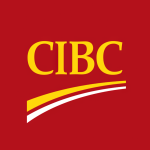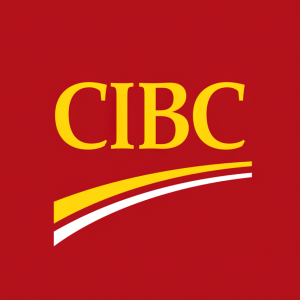Welcome to our dedicated page for CIBC SEC filings (Ticker: CM), a comprehensive resource for investors and traders seeking official regulatory documents including 10-K annual reports, 10-Q quarterly earnings, 8-K material events, and insider trading forms.
CIBC’s cross-border banking empire spans Canadian mortgages, U.S. commercial lending and global capital markets—so its SEC disclosures pack dense data on CET1 ratios, credit losses and dividend capacity. If you have ever searched "CIBC SEC filings explained simply" or wondered how currency swings flow through risk notes, you know the challenge.
Here you’ll find every document the Canadian Imperial Bank of Commerce files with EDGAR, from its annual Form 40-F—our platform tags it "CIBC annual report 10-K simplified"—to each 6-K that doubles as the "CIBC quarterly earnings report 10-Q filing" investors ask about. Need activity alerts? The moment executives file "CIBC insider trading Form 4 transactions" or "CIBC executive stock transactions Form 4", our AI flags them. Material announcements appear under "CIBC 8-K material events explained", while board pay details live inside the "CIBC proxy statement executive compensation" section.
Stock Titan layers AI-powered summaries, real-time updates and expert context on top of raw filings. Scan a side-by-side "CIBC earnings report filing analysis" that highlights net interest margin shifts, compare segment revenue in seconds, or set push notifications for "CIBC Form 4 insider transactions real-time". Whether you’re monitoring mortgage exposure or understanding CIBC SEC documents with AI, every filing type�40-F, 6-K, 8-K, Form 4 and more—lands here first, already distilled so you can act on insight, not pages.
Canadian Imperial Bank of Commerce (CIBC) is offering Capped Leveraged Index Return Notes (LIRNs) linked to the Russell 2000 Index (RTY). The notes are senior unsecured debt maturing in approximately two years (July 2027) and expose investors to CIBC credit risk. Each $10 unit provides 200% upside participation in any Index appreciation, but returns are capped at 20.00-24.00% ($12.00-$12.40 per unit). If the Index ends flat or down by up to 10%, principal is returned. Below the 90% Threshold Value, investors incur a 1-for-1 loss, risking up to 90% of principal.
The indicative initial estimated value is $9.267-$9.681, below the $10 public offering price, reflecting CIBC’s lower internal funding rate, a $0.20 underwriting discount and a $0.05 hedging-related charge. Larger purchases (�300,000 units) receive a reduced public price of $9.95 and a $0.15 discount. The notes pay no periodic interest or dividends, have no exchange listing, and secondary market liquidity is expected to be limited. All cash flows occur only at maturity and depend on BofA Securities, Inc. acting as calculation agent.
The securities are not FDIC-insured, are not bail-inable, and rank pari passu with CIBC’s other unsecured, unsubordinated debt. Investors should consult the Term Sheet, Product Supplement EQUITY LIRN-1, Prospectus Supplement and Prospectus (all dated 5-Sep-2023) for full risk disclosures before investing.
Canadian Imperial Bank of Commerce (CM) has filed a Rule 424(b)(2) pricing supplement for a new U.S.-registered structured note offering. The $4.2568 million aggregate principal amount of “Trigger GEARS� notes is linked to the S&P 500® Index (SPX) and matures on July 1, 2030.
Key economics:
- Denomination: $10 per note (minimum $1,000).
- Upside Gearing: 1.203× any positive SPX return at maturity.
- Contingent principal protection: 100 % repayment only if SPX decline � 25 %. Below the �25 % Trigger Amount, principal is reduced 1:1 with the negative return.
- No periodic coupons; investors forgo dividends.
- Initial SPX level: 6,141.02; Downside Threshold: 4,605.77 (75 %).
- Initial estimated value: $9.905 per $10 note, below issue price, highlighting embedded fees.
Risk profile: Notes are senior unsecured obligations of CIBC, not CDIC/FDIC-insured and not exchange-listed. Repayment depends on both CIBC’s creditworthiness and SPX performance, exposing investors to complete principal loss in adverse scenarios. Secondary market liquidity is expected to be limited.
Distribution: CIBC World Markets will sell the notes to UBS Financial Services at no discount, implying full proceeds to CIBC and no underwriting concession disclosed.
With a relatively modest issue size and zero ongoing interest cost, the transaction provides low-cost term funding for CIBC but is unlikely to be material to CM’s overall capital structure.
Canadian Imperial Bank of Commerce (CIBC) is marketing Market-Linked Securities � Auto-Callable with Fixed Percentage Buffered Downside linked to the Nasdaq-100 Index (NDX). Each security has a $1,000 face amount, will price on 30 Jul 2025, be issued on 4 Aug 2025, and mature on 2 Aug 2029 (4-year tenor unless called earlier).
Auto-call feature: On any annual Call Observation Date, if the Index closing level is at or above the Starting Level, the note is automatically redeemed for par plus a predetermined Call Premium: at least 8 % (2026), 16 % (2027), 24 % (2028), or 32 % (2029). The Call Payment Date is three business days after the relevant observation date.
Downside protection & payout: If not called, final repayment depends on Index performance. Investors receive:
- $1,000 if the Ending Level is � 90 % of the Starting Level (10 % buffer).
- Otherwise, a loss of 1-for-1 on the decline beyond 10 %, exposing holders to a maximum 90 % principal loss.
Key structural points: � No periodic coupons � returns limited to call premium. � CIBC acts as calculation agent. � Estimated value at pricing expected � $938.10, below the $1,000 offer price, reflecting embedded fees (up to 2.825 % underwriting discount and other selling concessions). � No listing; secondary market liquidity not assured. � Subject to CIBC credit risk and U.S./Canadian tax uncertainties.
Risk highlights include capped upside, potential 90 % loss of principal, reinvestment risk upon early call, valuation uncertainty, and conflicts of interest. Investors are directed to review the preliminary pricing supplement and risk factors for complete details.
CIBC is marketing Autocallable Strategic Accelerated Redemption Securities (STARS) linked to the Russell 2000 Index. The structured notes are offered at $10 per unit, carry a maximum term of approximately five years, and are automatically redeemed early if, on any Observation Date, the index closes at or above its initial level (the “Call Level�). There are five potential Observation Dates scheduled roughly one, two, three, four and five years after pricing.
Call premiums escalate over time:
- $10.75�$10.85 if called after year 1
- $11.50�$11.70 after year 2
- $12.25�$12.55 after year 3
- $13.00�$13.40 after year 4
- $13.75�$14.25 at the final Observation Date
Downside profile at maturity: If not previously called and the index declines �15 %, investors receive full principal. If the decline exceeds 15 %, losses match the index on a 1-for-1 basis, exposing up to 85 % of capital.
Key considerations: � No interim interest payments � Return is capped at the applicable call premium � Credit exposure to CIBC � The initial estimated value will be below the public offer price � Secondary market values may be lower than purchase price � Investors forgo dividends of the index constituents � Small-cap volatility risk inherent in the Russell 2000.
The notes are not listed on any exchange; detailed terms, risks and tax treatment are in the linked Preliminary Offering Documents filed under CIBC’s FWP (SEC Reg. No. 333-272447).
Canadian Imperial Bank of Commerce (CM) is marketing senior unsecured Market-Linked Securities that are auto-callable, buffered downside, principal-at-risk notes tied to the Nasdaq-100 Index (NDX). Each note has a $1,000 face amount, pays no coupons, and will be issued on 4 Aug 2025, maturing (if not called) on 2 Aug 2029.
Automatic call mechanism: If on any Call Observation Date the NDX closing level is at or above the Starting Level, the note is redeemed for face value plus a fixed Call Premium that increases annually on a simple, non-compounding basis: at least 8% (2026), 16% (2027), 24% (2028) and 32% (2029). These premiums cap the maximum return; investors do not participate in any additional index appreciation.
Maturity payment (if not called): � If the index ends down �10%, investors receive the full $1,000. � If the index ends down >10%, repayment is reduced dollar-for-dollar beyond the 10% buffer, exposing holders to as much as a 90% loss of principal.
Key structural details: � Unsecured, unsubordinated obligations of CIBC; all payments subject to issuer credit risk. � Not bail-inable, not FDIC/CDIC insured, and will not be listed on any exchange. � Original offering price $1,000; underwriting discount up to $28.25 (2.825%), leaving minimum proceeds of $971.75 to CIBC. � CIBC’s estimated value on the pricing date is expected to be at least $938.10, below the public offering price, indicating built-in costs and hedging adjustments.
The notes are intended for investors seeking short-dated equity exposure with limited upside and a 10% buffer, who are comfortable with issuer credit risk and the possibility of significant capital loss.
Canadian Imperial Bank of Commerce (CIBC) has filed a Free Writing Prospectus for Autocallable Strategic Accelerated Redemption Securities linked to the Russell 2000 Index, with a maturity date in July 2030. The securities, priced at $10 per unit, feature automatic call provisions with increasing redemption amounts over five observation dates.
Key features include:
- Automatic call if Index closes at or above Starting Value on any Observation Date
- Call amounts range from $10.75-$10.85 (Year 1) to $13.75-$14.25 (Year 5)
- If not called and Index doesn't decline more than 15%, principal is returned
- 1-to-1 downside exposure beyond 15% decline, with up to 85% principal at risk
- Initial estimated value between $9.224-$9.656 per unit
Notable risks include credit risk of CIBC, no periodic interest payments, limited secondary market liquidity, and potential for significant principal loss. The offering includes a $0.20 underwriting discount and $0.05 hedging-related charge per unit.


